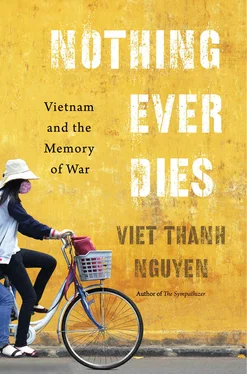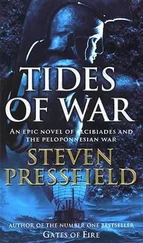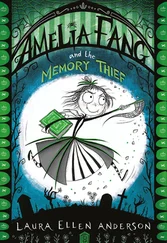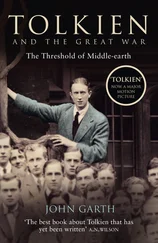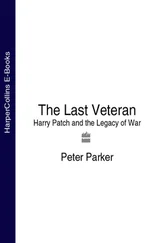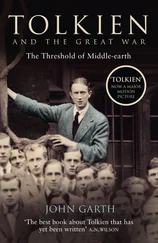The cities of the dead fulfill this desire for a memory quarantined in both space and time, for the burial of the dead is a burial of contagious memory. As Marc Augé notes of the war cemetery at Normandy, “nobody could say that this arranged beauty is not moving, but the emotion it arouses is born from the harmony of forms,” which “does not evoke raging battles, nor the fear of the men, nothing of what would actually restore some of the past realistically lived by the soldiers buried” there. 2Beautiful, quiet war cemeteries mask the certainty, recorded in many photographs, that these dead died in heaps, in fragments, in piles, in pieces, their limbs bent at impossible angles and their muddy clothes sometimes ripped from their bodies by the velocity of the manmade force that took their lives. Their gravestones become what Milan Kundera calls “melancholy flowers of forgetting.” 3On memorial days or private anniversaries, families will gather at the gravestones of their dead, who all too often met their fates in their teens or early twenties. But during the rest of the year, the dead are noticed only by their caretakers, who do their work as cows wander among the tombs.
In daylight, the capital of the dead is a peaceful and reverent place, exempt from the crowds and the clamor of the cities of the living. The atmosphere is somber but not gloomy, the red-roofed temples with their ornate eaves serene and the tombs tended and tidy. Many of the capital’s features are shared with the smaller cities of the dead, the most important being the Mai Dich Martyrs Cemetery in Hanoi, reserved for the heroes of the Communist Party. Behind gated walls, nineteen luminaries rest on an elite boulevard, prestigious real estate lined with black marble tombs for the likes of Le Duan; To Huu, the party’s poet laureate; and Le Duc Tho, winner of the Nobel Peace Prize along with Henry Kissinger for their negotiation of the Paris Peace Accords (Kissinger accepted his award but Le Duc Tho declined, for there was no peace to speak of in 1973). The boulevard leads to the center of the groomed grounds where an obelisk stands, engraved with To Quoc Ghi Cong , the Fatherland Remembers Your Sacrifice. This slogan is inscribed in all the places where the honored dead dwell. The Communist Party draws its vitality from the marrow of those bones, most of which are found in cemeteries far less grand than Mai Dich. 4In these more proletarian burying grounds, Vo Danh marks many of the gravestones — nameless, anonymous, unknown. Most of the dead have died far from home, and while they are not disrespected, they often exist in shabby circumstances, too distant for relatives to visit, looked on askance by those locals who see themselves as having been conquered by these martyrs. Their provincial cemeteries are often dusty and neglected, the grass withered, the tombs arrayed on bare earth, the names on gravestones and shrines faded.
In these cemeteries, the masses of the dead lay as inert as facts, a million of them, not counting the contradictory facts of the losers and bystanders. These facts are not memory but are interpreted, revivified, and placed into stories by memory’s mechanisms, stories that change from time to time to suit the interests of the living. “Memory fades,” the writer Joan Didion says, “memory adjusts, memory conforms to what we think we remember.” 5Mutable and malleable memory calls for an ethical sense, a guide on how to remember in fitting ways. Perhaps this need for a guide is particularly urgent when it comes to remembering the dead, who may have died for us or the community to which we belong, whom we might have killed or whom someone killed in our name. This need to remember the dead properly extends to all those whom we consider kin, by blood, affiliation, identification, community, sympathy, and empathy. These are the near and the dear, as the philosopher Avishai Margalit calls them, people for whom we naturally feel a bond because they belong to us through what he calls the “thick” relations of family, friends, and countrymen. 6
A sense of natural affinity is what gives the ethics of remembering one’s own its tremendous power, its capacity to draw from our emotions and to stimulate feelings that range from heartwarming to blood-boiling. We are in the thick of things when it comes to this kind of ethics, our feelings deep and our reactions quick, whether we speak of love in the private world or patriotism in the public world. Because these ethics emerge from relationships that we deem natural, they often lead to unquestioning loyalty to those we remember, at least in the heroic version of these ethics. When it comes to war, we usually remember our own as noble, virtuous, suffering, and sacrificial. Uncomfortable questions about these heroes are unthinkable or recede into the background, unless circumstances force us to confront them. If and when we can finally acknowledge that those of our own side committed acts that cannot be reconciled with law and morality, we sometimes excuse those acts and their agents by blaming extenuating circumstances, such as the stress of combat. At worst, we may consider these acts as reactive and justified simply because the enemy acted immorally first. Even so, we continue to think that those of our side are human, demanding understanding and empathy as people endowed with complexities of feeling, experience and perspective. Those of the other side, our enemies, or at least those unfriendly or alien to us, lack those complexities. To appropriate the language of the novelist E. M. Forster, they appear in our perception as “flat” characters. 7Those of our own side are usually “round,” three dimensional, observable from all angles, thick in flesh, bone, feeling, and history. When they feel, and what they feel, so do we.
One exception in the prominence of round characters for this kind of heroic ethics is that those of our own side can also be flat characters, so long as they are positive. After all, there is nothing flatter than the dead in a cemetery, marshaled as characters into a narrative not of their own making. They remain obedient to the generals and statesmen who continue speaking on their behalf, telling the story that the Fatherland remembers their sacrifice. This mournful but triumphant Vietnamese story exemplifies the ethics of remembering one’s own, unifying the cemeteries with the monuments, memorials, and museums that commemorate the war, where dead and living appear as both round and flat. 8The greatest and flattest character in contemporary Vietnamese storytelling and memory is Uncle Ho. While the historical Ho Chi Minh is round and complex, in life and in his biographies, the fictional Uncle Ho whose image is found everywhere is flat, featured most prominently on the country’s paper currency. 9This Uncle Ho is pure, sincere, and sacrificial, embodying all the ideals of the painful and glorious days of the revolution. So utterly attractive a character is he that even some of those from the losing side acquiesce to calling him Uncle. The persuasive, titanic, and heroic Uncle Ho proves Forster’s claim that flat characters are not necessarily worse, aesthetically, than round characters. Flat and round characters simply serve different purposes. This flattened Uncle Ho is the one whom the revolution must remember, his image and icon continuing to urge on the people the heroic version of the ethics of remembering one’s own, where their identity is one with that of party, state, and country.
Flat, heroic characters are commonplace, even fashionable, in Vietnam. They star on those billboards all over the country that exhort citizens to behave nobly and work for the nation. These billboards have their stylistic origins in wartime propaganda posters featuring revolutionary heroes and heroines, virtuous and smiling, chiseled and fierce, urging the people to unite and fight. Flat characters also dominate in the museums, from the Fine Arts Museum of Hanoi to the War Remnants Museum of Saigon, where the stories share a numbing sameness. In the common narrative of the country’s museums, a foreign invader, French and later American, occupies the land and terrorizes the people. Communist revolutionaries, at great cost to themselves, mobilize and organize the people. Following the guidance of Uncle Ho, the Communist Party leads the people to victory. In the aftermath, with Uncle Ho gone but under his benevolent gaze, the Communist Party moves from total war to collective industry, shaping the country’s increasingly prosperous economy. The shabby Museum of the Revolution in Hanoi presents this story for the entire country, beginning with black-and-white documentary photographs of colonial atrocities and legendary revolutionaries, ending with unintentionally pitiful displays of economic triumph: textiles and sewing machines and rice cookers behind glass.
Читать дальше
